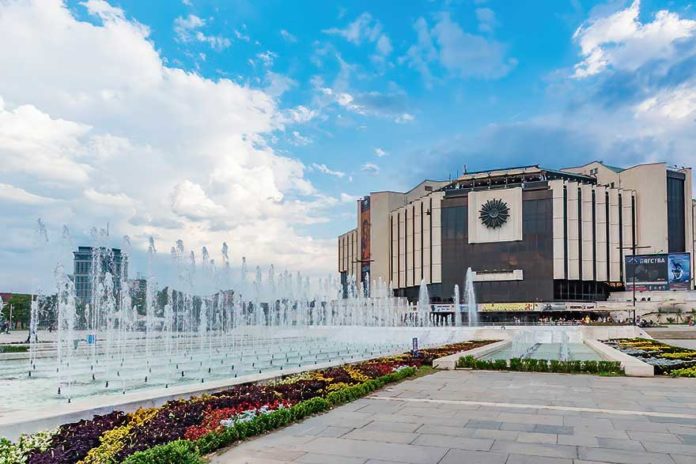Today, the National Palace of Culture (NDK) is Sofia’s largest convention center in Southeast Europe. The building, which has 13 halls, was constructed in 1981 to commemorate the 1300th anniversary of the establishment of the Bulgarian state. The NDK is used for cultural events. Alexander Barov led its architectural project, with the surrounding space designed by Athanasius Agura and the park designed by Valentina Atanasova.
The early years of the National Palava of Culture
The capital leadership of the Bulgarian Communist Party initiated the establishment of the National Palace of Culture (NDK) in Sofia, Bulgaria, in the mid-1970s as a significant cultural center. They aimed to transform the central part of the city, then a chaotic area filled with ugly buildings, old barracks, and wastelands, into a modern urban planning environment. Originally intended for an opera house, they announced an international competition to design a modern center for multifunctional cultural purposes. However, the competition did not produce a winner. After lively discussions, the decision was made that the site would be most suitable for a congress and concert center, mirroring a common feature in many European cities. The studio of architect Alexander Barov and designer Bogdan Atanasov, along with other prominent architects and consultants, took on the project. The NDK has since emerged as a well-known landmark in Sofia, a hub for various cultural events and congresses.
The construction process
Construction of the National Palace of Culture (NDK) began on May 25, 1978, and was completed by 1981, with the country’s then-leader, Todor Zhivkov, officially opening the building. The NDK, a massive complex, stands on 18,300 square meters, spans a total area of 123,300 square meters, and rises to a height of 51 meters. The construction consumed 335,000 cubic meters of concrete, required the excavation of 1.7 million tons of earth, and used 10,000 tons of metal structures. Comparable in scale and design to the Alexander Nevsky Cathedral, the NDK’s construction also benefited from the voluntary assistance of many Bulgarian citizens who contributed their time and resources. The completion of the building coincided with the 1300th anniversary of Bulgaria, costing a total of 270 million levs.
Symbolics
The National Palace of Culture (NDK) has several symbols, including the preserved sign of a firebird formed by curved stripes in a circle and a stylized sun made of bronze with rays emerging as ears of wheat. The central lobby features a gilded sculpture called “Revival” by Dimitar Boykov, representing a hospitable and revived Sofia. Another symbol of the NDK is a bird entwined in the sun’s rays, symbolizing the pursuit of knowledge and light.
Image source: Takashi Images – stock.adobe.com



